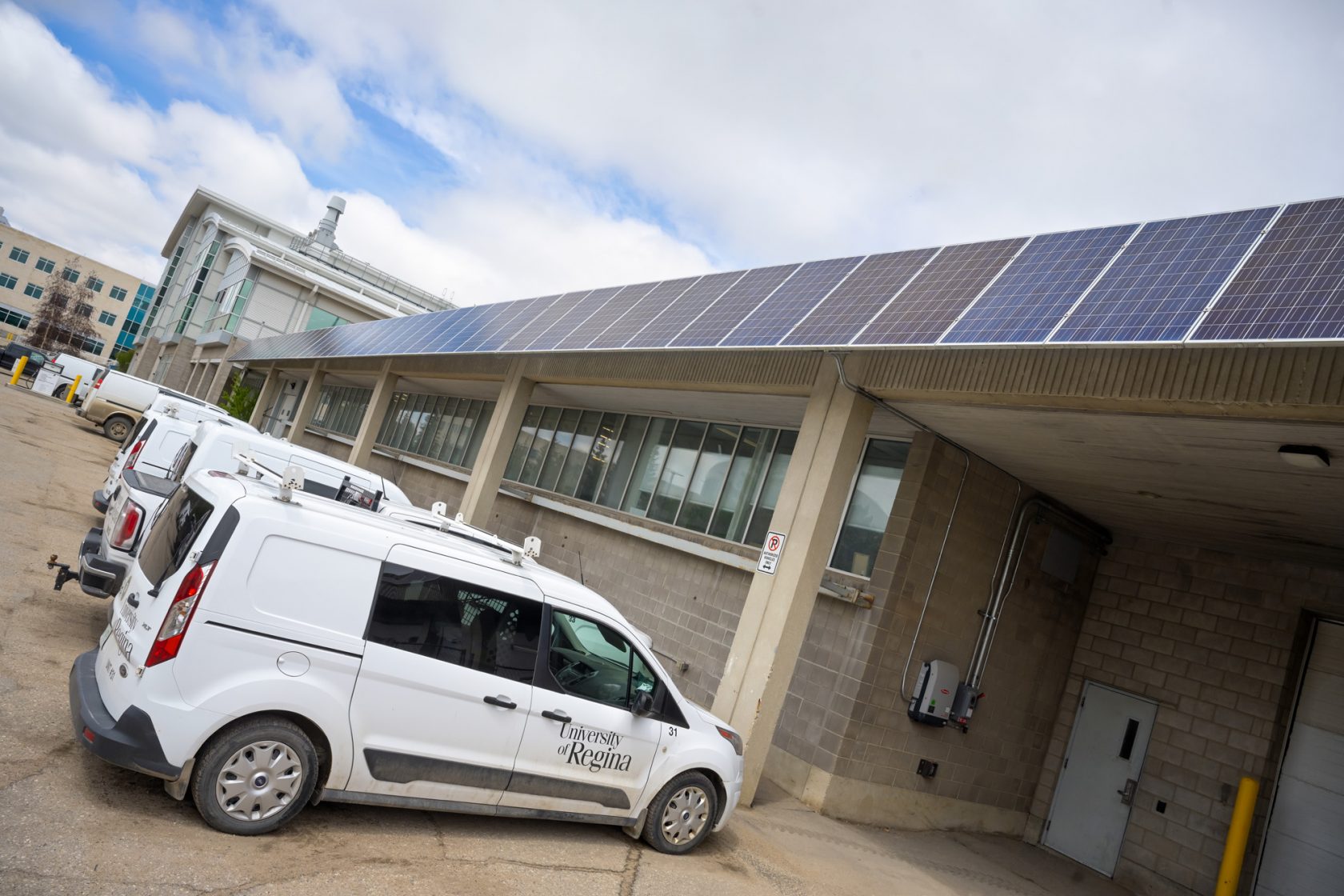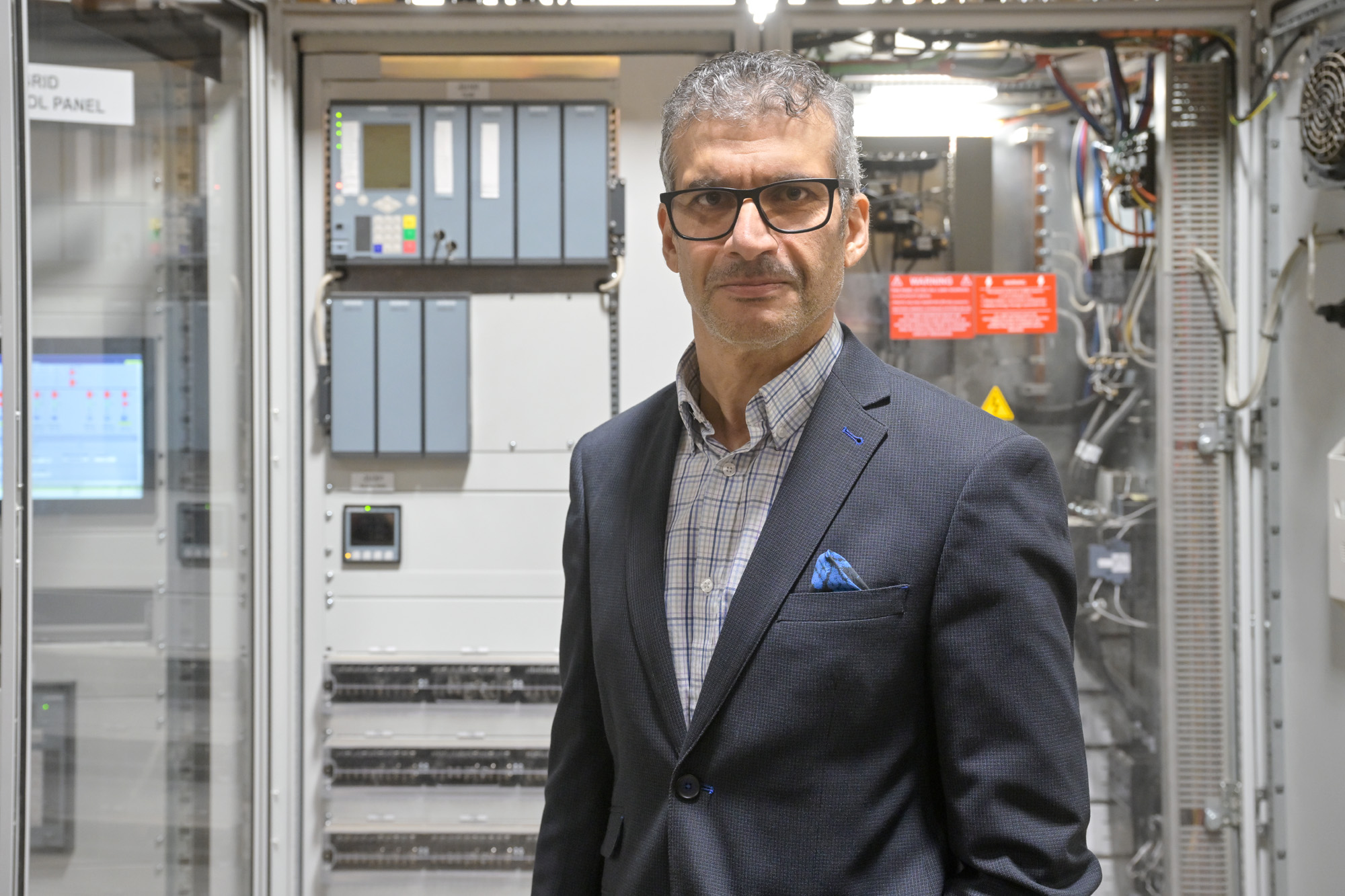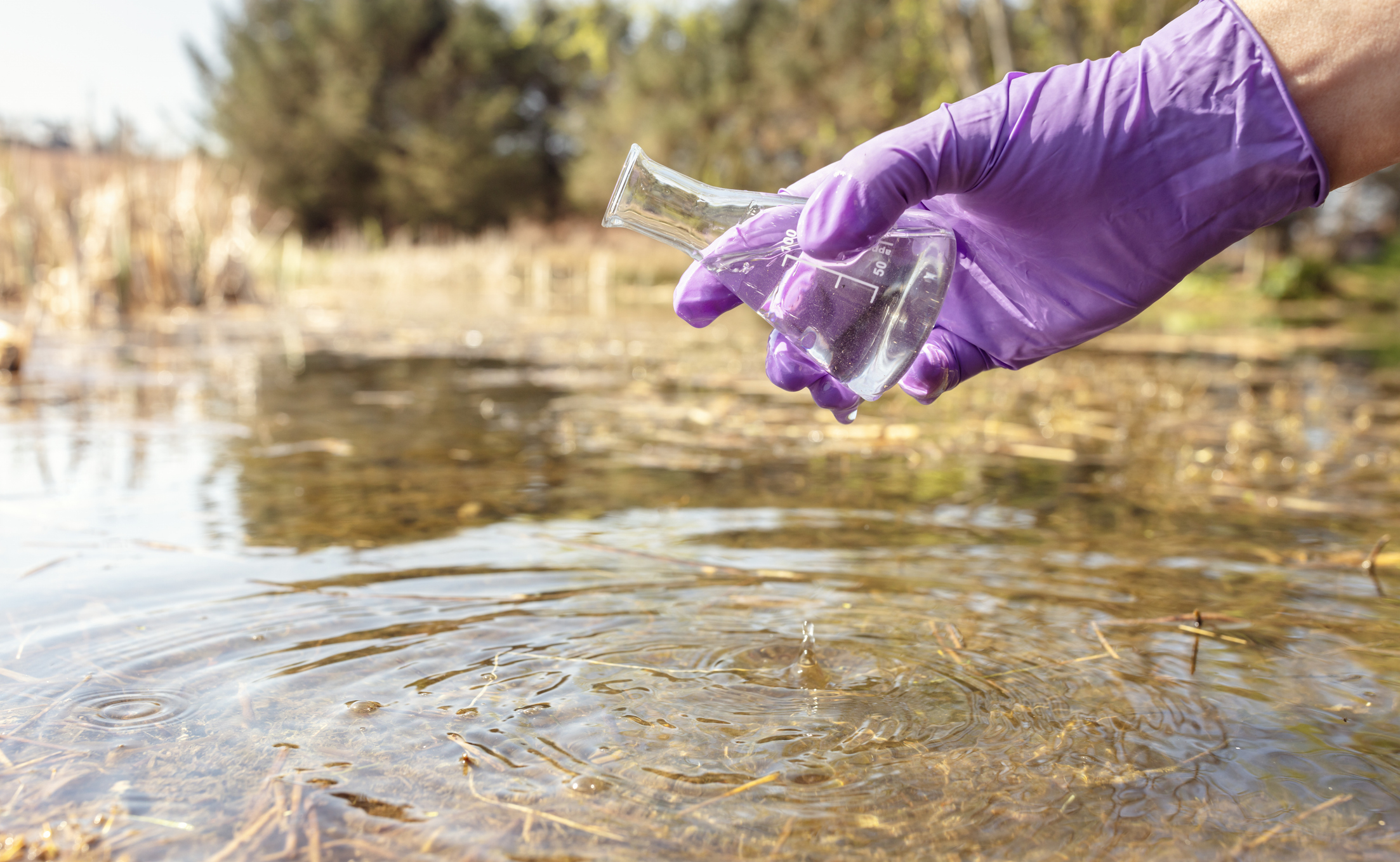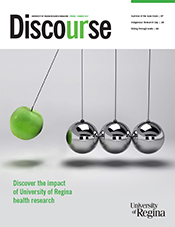A bank of solar panels at the University of Regina, one of the microgrid’s clean energy sources. (Photo by U of R Photography)

A first-of-its-kind project at the University of Regina is now up and running—and it could change how we power our communities.
Developed by a research team at the University, the University’s new Microgrid Living Lab is fully operational and ready to enable groundbreaking research, hands-on learning, and industry collaboration.
What is a microgrid?
A microgrid is like a mini power plant that can generate, store, and distribute its electricity using renewable energy, like solar panels, wind, and hydro energy.
Dr. Irfan Al-Anbagi is an associate professor of engineering and the director of the Microgrid Lab. He says a microgrid is a small-scale energy system that operates independently or alongside the main power grid. “They essentially act like a small self-sufficient power system that can still connect to the main grid when needed.”

Why a microgrid?
Unlike a traditional power grid that delivers electricity across long distances from large power plants, a microgrid is a local system that can keep homes, buildings, or even entire neighbourhoods powered even if the main grid goes down. This means better energy reliability, fewer outages, and more control over where and how energy is used.
And because the microgrid uses clean energy sources, it’s also a step toward reducing greenhouse gas emissions
“There are only a handful of microgrid facilities in Western Canada, and the U of R’s is the first of its kind in Saskatchewan. This microgrid lab is the first step toward an eventual campus-wide microgrid, supporting the University’s multi-year initiative to become a carbon-neutral campus,” says Jocelyn Crivea, director of the U of R’s Sustainability Office.
A testing ground for the future of energy
The U of R’s Microgrid Living Lab is more than just a power system—it’s a sandbox environment, a place for innovation. Built with funding from Prairies Economic Development Canada (PrairiesCan), the lab includes real energy infrastructure and resources, like energy loads (which are anything that uses power), a digital control centre, a battery storage system, and renewable power sources. These tools allow researchers, students, and companies to emulate and test how microgrids can work in the real world.
“The microgrid at the University of Regina is now helping us imagine, test, and build a smarter, greener energy future.”
“Microgrids are becoming an increasingly popular solution for delivering dependable electricity to remote or difficult-to-access locations, making a microgrid testing ground an invaluable resource for Saskatchewan,” says Al-Anbagi.
The U of R’s microgrid testbed can be used to study and analyze practical problems related to design, implementation, cost optimization, and other engineering issues, making it an important tool for local businesses working on renewable energy technologies, or for small and medium-sized enterprises (SMEs) to test new models and ideas—allowing them to bring better, more efficient technologies to market. Engineering consultants can use the lab to test their microgrid projects before installing them in real communities.
Why this matters
As the demand for electricity and cleaner energy increases while climate change worsens, projects like the Microgrid Living Lab are more than academic—they’re practical. The lessons learned at the microgrid could shape how communities in Saskatchewan and beyond generate and manage their power.
“The microgrid at the University of Regina is now helping us imagine, test, and build a smarter, greener energy future,” says Crivea.
An open invitation to collaborate
The University is now inviting partners to join in. Whether you’re a local business with an idea, a national research team, or an international expert in energy systems, the Microgrid Living Lab offers space, tools, and expertise to push your work forward.

















